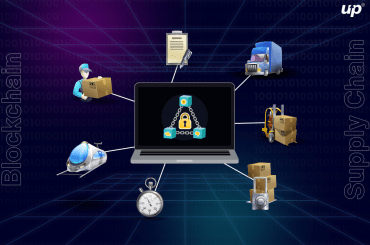The whole concept of Blockchain wasn’t that complex when it came around, but times have now changed and Blockchain development has evolved a lot. Who started out as a decentralized payment network has now become a decentralized supercomputer where app developers from around the world are creating their own software applications?

Being an ever-growing venture Blockchain is hands down the most amazing career choice you can ever make. However, as a beginner in this technology, you will definitely find yourself a bit lost at first. But don’t worry because we are here to help you out. Being an blockchain app development company we have created a list of consensus systems which you can implement in your journey for Blockchain development.
But before we jump right into that, we thought it would be better to enlighten you about some of the basic aspects of Blockchain.
For starters, let us tell you that Blockchain is an immutable record of data that is managed by a cluster of computers that are not owned by any organization or an individual. Every single block in this data are secure and bound to each other with the help of cryptographic principles. Checkout the best enterprise app development company.
Bitcoin is considered to be the glue which brought together Blockchains by using it to power up a decentralized payment system. In fact, implementation of Blockchain in the Bitcoin industry this technology has seen a wider adoption.
In order to maintain the integrity and security of the distributed computing systems, you got to have knowledge about the Blockchain consensus algorithms. For that reason, we thought it would be right to enlist different types of consensus systems that are quite popular these days.
Also Read, Know more about Blockchain as a service and its business models
-
Proof Of Work (PoW) based Blockchain consensus system
It is a process of producing a cryptographic hash. The concept was introduced back in 1993 by Cynthia Dwork and Moni Naor, but later it was re-introduced by Satoshi Nakamoto in 2008 in the Bitcoin whitepaper.
In this system, the Blockchain valuators must remember to take data from block header as an input and run it constantly through a cryptographic hash function. PoW needs high levels of electricity in order to process power and decide what data should be added to the next block in a Blockchain. You need to have ASICs which are highly specialised computers to compute complex mathematical problems which are required in the PoW systems. Checkout the best ipad app development company.
-
Proof Of Stake (PoS) Based Blockchain Consensus
This consensus system was created back in 2011 and it came out as an alternative to PoW. Although both PoW and PoS have similar motives, they tend to represent various fundamental differences and features. Those changes were noticed during the time of validation of new blocks on the Blockchain network.
We found out that PoS consensus algorithm differs a lot to PoW mining with a mechanism where blocks get validated in terms of the stake of the network participants. In this algorithm, every validator needs to stake resources primarily in the form of digital money or tokens instead of running functions. The validator of each block is then selected randomly from the stakeholders. However, the selection is based upon the amount of computational power allocated.
If you feel like you need any sort of help in Blockchain app development then do make sure to reach out to us. Being a top-rated Blockchain app development company, Fluper would be happy to help you out.
Also, remember that each PoS system can implement the algorithm in different ways, but if we have to talk about one then it would be a pseudo-random selection process.
-
Delegated Proof-of-Stake (DPoS) based Blockchain Consensus
This concept was introduced by Daniel Larimer. This is yet another type of consensus algorithm that is based upon the voting system where delegated votes for their favourite validators just to help them out in the consensus state of new blocks. The motive behind that is to make the validators sole responsible for validating transactions and maintaining the Blockchain network.
In fact, each voter’s power is kept proportional to the size of the stake present in the network. Following are some projects that use DPoS consensus algorithm for validation of transactions:
- EOS
- Steem
- Bitshares
- Tezos
Most of the Blockchain experts prefer calling it a democratic version of PoS consensus as it based on a voting process and lets one elect representatives instead of independent network nodes.
-
Proof of Elapsed Time (PoET)
This consensus algorithm was introduced by none other than Intel. The motive was to solve the computing challenges which were latched to the random leader elections. The algorithm was launched as a part of the Software Guard Extensions (SGX) programming reference manual.
These days it is being used quite extensively by many private Blockchains. A perfect example is Hyperledger Sawooth as it relies on a randomised timer system for network participants instead of using a mining hardware which was in the case of PoW. Also, each and every participating Blockchain node in the network is prompted to wait for a period of time. Whoever with finished time wins the new block and gets a chance to validate it.
-
Proof of Authority (PoA)
This consensus algorithm is based on the reputation of the trusted parties present in a Blockchain network. In fact, it is considered to be an efficient mechanism for private blockchains and it got conceptualized in 2017 by Gavin Wood, the co-founder and former CTO of Ethereum.
More concisely, this algorithm is based on the value of identities within a single network or a system block. In this system, validators don’t get to stake resources but they have to stake their own reputation and identities. The bottom line is, PoA Blockchain network is highly secured by the validating nodes that are chosen as reliable parties.










